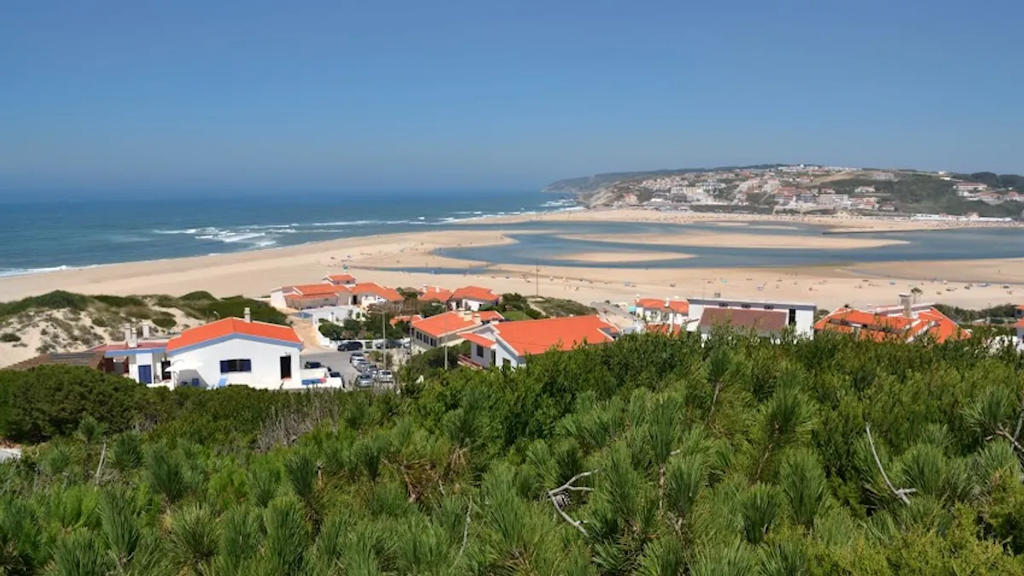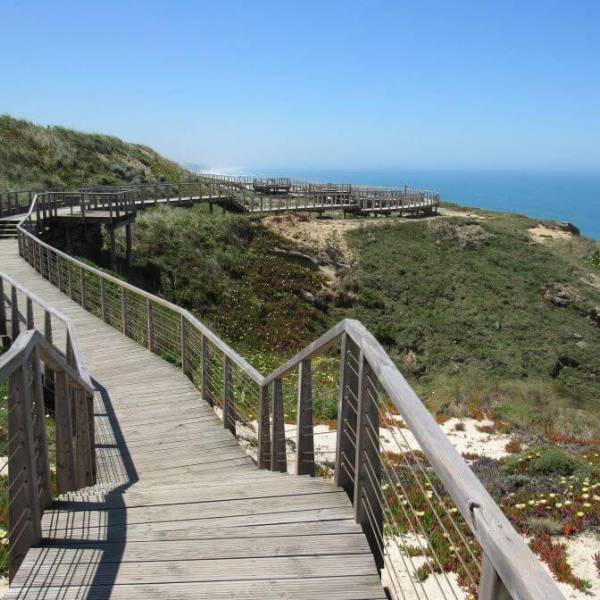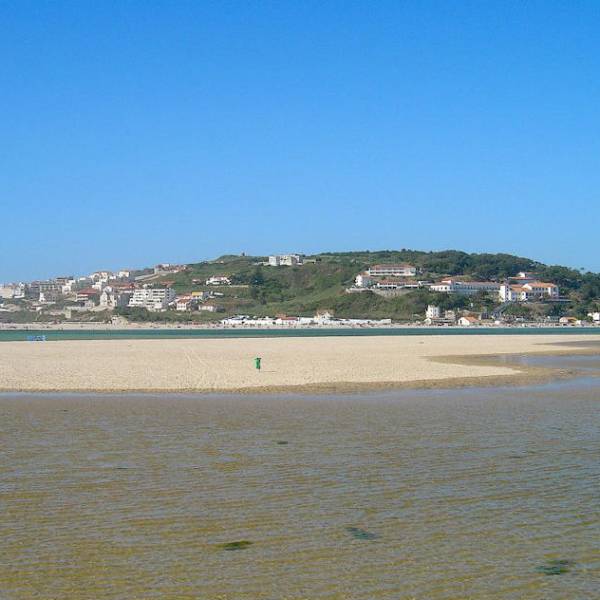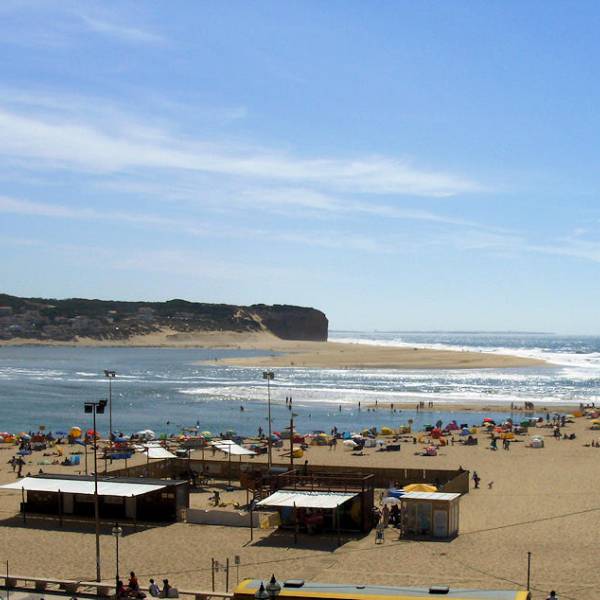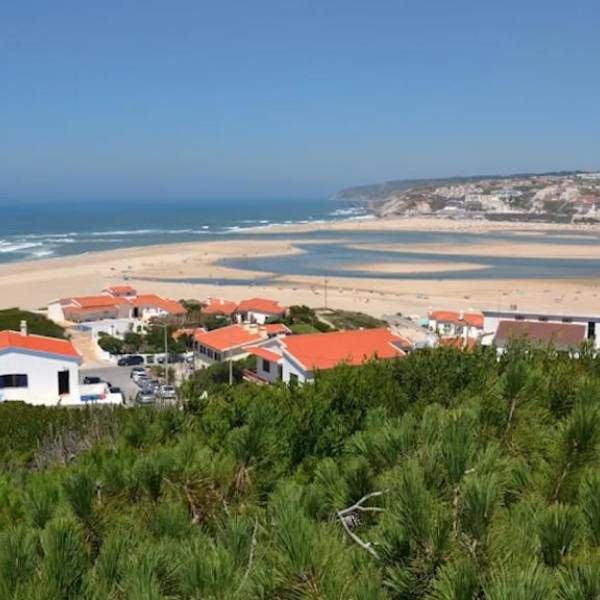Óbidos Lagoon is an ideal day trip from Lisbon as it offers a tranquil escape into nature. With its picturesque landscapes and ample opportunities for water sports, visitors can indulge in outdoor adventures while immersing themselves in the region's natural beauty.
Óbidos Lagoon borders the Caldas da Rainha municipality to the north, including the Foz do Arelho and Nadadouro parishes, and the Óbidos municipality to the south, including the Vau and Santa Maria parishes. On the southern side, you'll find Poça do Vau, and on the western side, it connects to Poça das Ferrarias. The lagoon stretches up to 6 kilometers in length and has a width that varies between 1 and 1.5 kilometers, predominantly in the NW-SW direction. However, this configuration tends to oscillate considerably due to sediments pushed inland by the sea.
In its natural state, Óbidos Lagoon, like other coastal lagoons, would gradually transform into marshlands if its sedimentary regime remained undisturbed. However, human intervention accelerates the process of siltation through constant alterations to the hydrographic basins, resulting in increased sediment production. To counteract this, the local population engages in dredging activities to maintain a deeper system, thereby prolonging the life of these aquatic environments.
According to historical accounts, the lagoon was once even larger, reaching the foothills where the town of Óbidos now stands and lapping against the walls of the castle on the western side.
The lagoon's fauna includes various fish species such as sea bass, sole, plaice, turbot, gilthead bream, black bream, mullet, as well as other species like clams, cockles, mussels, shrimp, octopus, eels, and green crabs, among others.
Lisbon.vip Recommends
Fishing and bivalve mollusk harvesting are the main economic activities associated with Óbidos Lagoon, which the local communities depend on entirely. Although the fishing industry is not as prominent as in the past, it still holds significance as an economic driver in the region. Bivalve mollusk harvesting continues to be a major economic activity for local shellfish gatherers.
The traditional boat used by both fishermen and shellfish gatherers in Óbidos Lagoon is known as a "bateira". These boats feature an open deck and were traditionally used for harvesting mud. Nowadays, bateiras may have two gasoline-powered engines: a primary engine and an auxiliary engine that can be used in case of a breakdown. Every two years, the bateiras undergo maintenance, during which they are submerged in water when they are dried out to facilitate painting. During the summer season, visitors can rent pedal-powered watercraft, popularly known as "gaivotas", near the Foz do Arelho dock. These watercraft allow people to explore the Óbidos Lagoon at their leisure.
Óbidos Lagoon offers a wide range of aquatic sports and recreational activities throughout the year. These include sailing, windsurfing, canoeing, rowing, kiteboarding, jet skiing, water skiing, and stand-up paddleboarding. Whether you are a beginner or an experienced enthusiast, there are activities to suit every skill level and interest. With its natural beauty and cultural heritage, Óbidos Lagoon is a destination that offers something for everyone, whether it's exploring the lagoon's diverse flora and fauna, engaging in water sports and recreational activities, or simply enjoying the tranquility and serenity of its surroundings.
Map View


